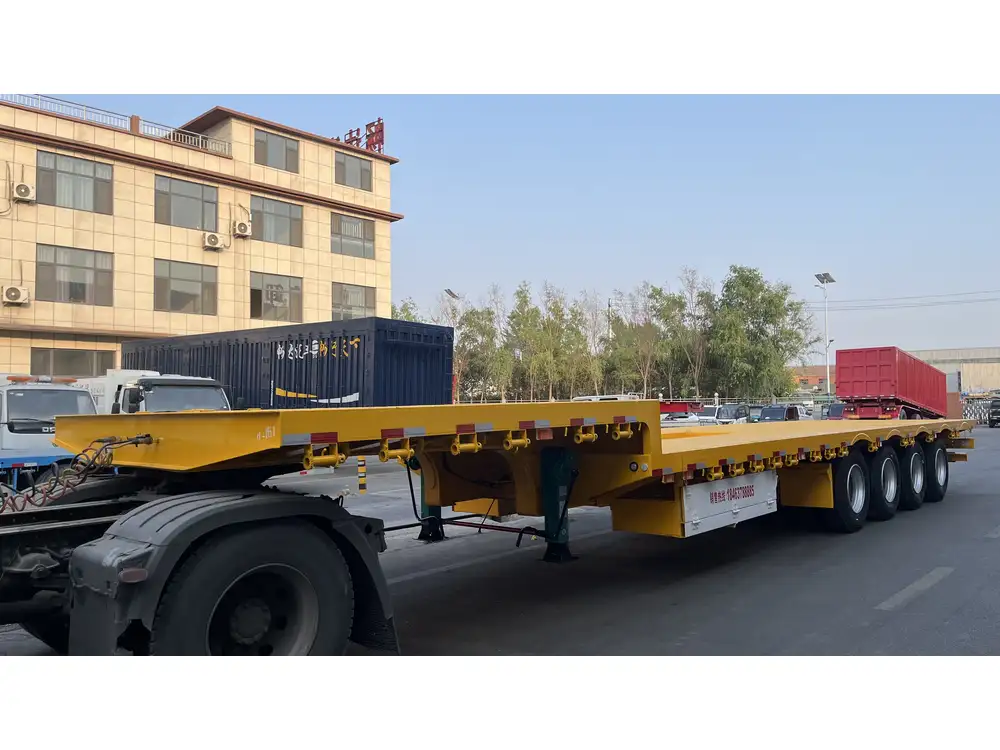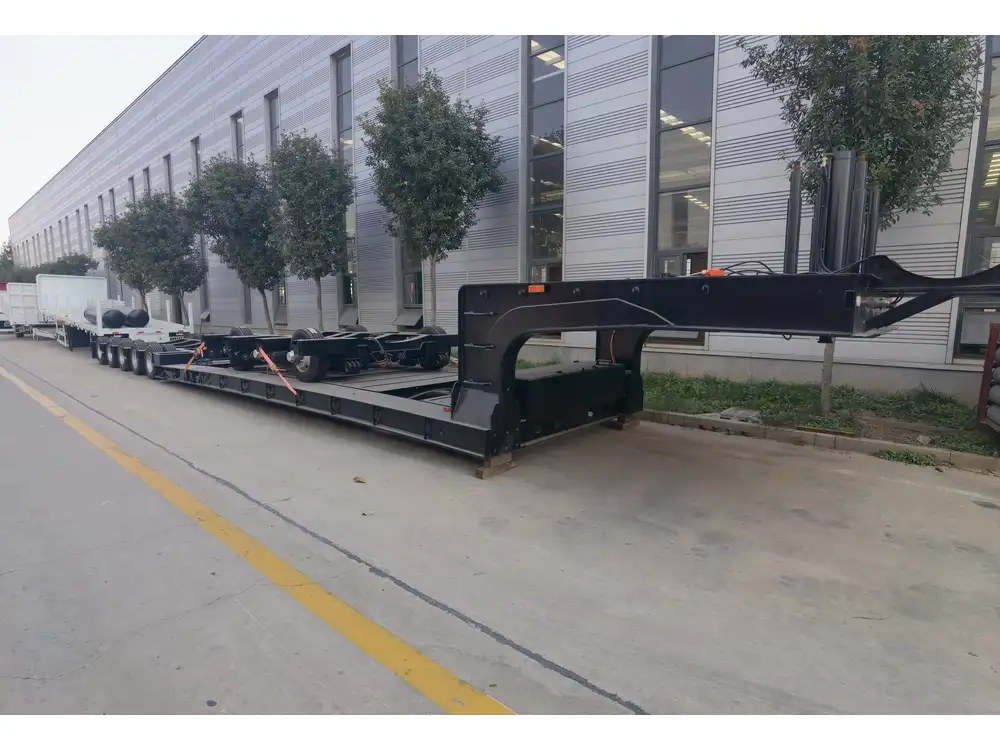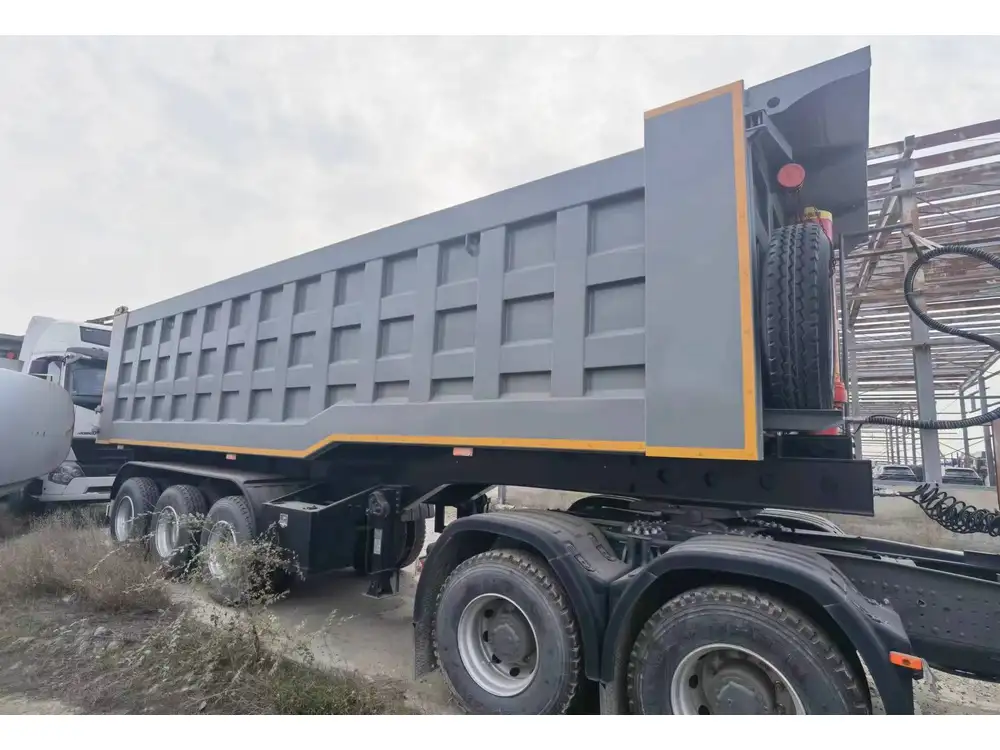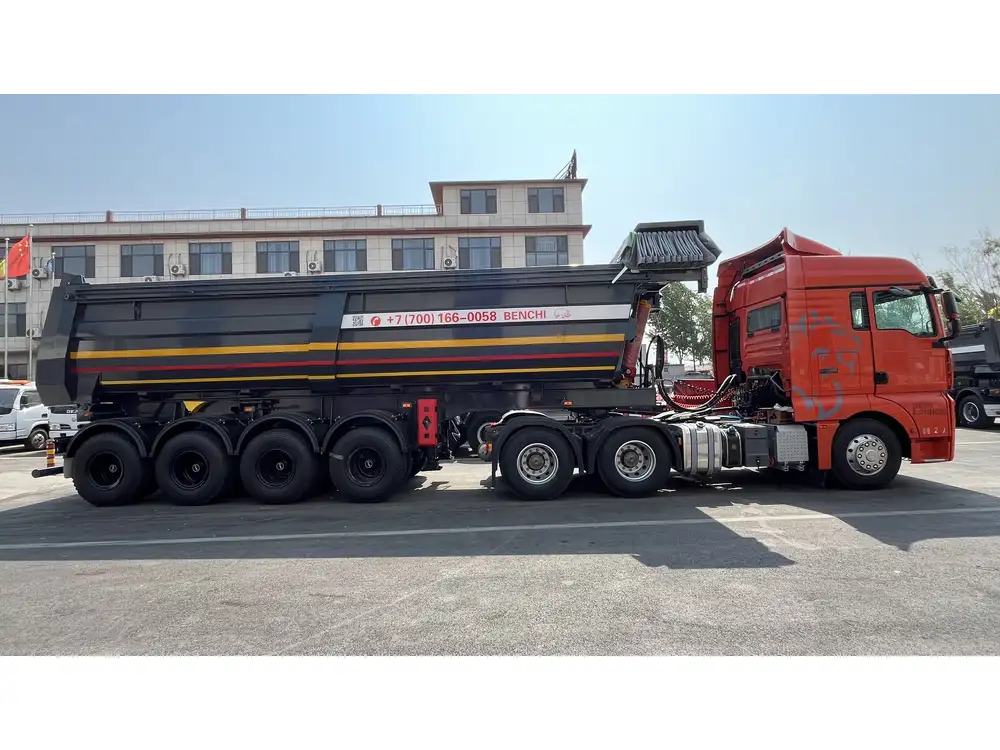The Importance of Semi-Trailer Floor Thickness
In the realm of transportation, the semi-trailer serves as a pivotal component of the logistics and freight industries. However, one vital characteristic that often goes underappreciated by even seasoned professionals is the thickness of the semi-trailer floor. The floor thickness plays a significant role in determining the trailer’s durability, load-bearing capacity, and overall performance. In this article, we provide an exhaustive examination of semi-trailer floor thickness, elucidating its importance, measurement standards, and the various materials used.
Standard Thickness Measurements of Semi-Trailer Floors
Table 1 outlines the typical thicknesses of semi-trailer floors based on different design specifications and applications.
| Type of Floor | Common Thickness (inches) | Common Thickness (mm) | Application |
|---|---|---|---|
| Wood Floor (Plywood) | 1.125 – 1.5 | 28.5 – 38 | General cargo |
| Steel Floor | 0.5 – 0.75 | 12.7 – 19.05 | Heavy-duty applications |
| Aluminum Floor | 0.25 – 0.5 | 6.35 – 12.7 | Lightweight goods |
| Composite Materials | 1 – 1.5 | 25.4 – 38 | Specialty cargo like refrigerated |

Key Factors Influencing Floor Thickness
1. Intended Use and Load Capacity
The floor thickness is not a one-size-fits-all metric; different goods require various floor thicknesses for optimal support and protection. When deciding on the appropriate thickness, consider factors such as:
- Type of Cargo: Heavier loads necessitate thicker floors, whereas lighter items can be transported on thinner floors without compromising safety.
- Dynamic Load Factors: Changes in speed, acceleration, and deceleration during transport exert dynamic forces on the trailer’s flooring, influencing integrity.
2. Material Composition
The choice of flooring material greatly impacts thickness specifications. Traditional wooden floors typically range between 1.125 to 1.5 inches, while aluminum and composite materials can be thinner due to their inherent strength-to-weight ratios. The following highlights the materials in use today:
- Wood: Usually made of plywood, wood offers decent weight support, but it is more susceptible to moisture and rot, necessitating proper treatment and regular maintenance.
- Steel: Known for its strength, steel floors are robust, capable of withstanding hefty loads. The trade-off is additional weight which can affect fuel efficiency and maneuverability.
- Aluminum: A lightweight alternative, aluminum reduces the overall weight of the semi-trailer, enhancing fuel efficiency, but may necessitate thicker dimensions to achieve similar load-bearing capabilities.
- Composite Materials: Composites provide excellent performance, exhibiting both lightweight and high strength. Claiming a growing share in the market, composite floors are ever more popular for specialized applications.

3. Regulatory Standards and Compliance
Transportation authorities often mandate specific construction standards for semi-trailers, including recommended thicknesses for floors based on the type of cargo being carried. Compliance with these regulations is crucial to ensure safety and avoid penalties.
4. Environmental Factors
Regional climate can influence the choice of floor thickness. For example, trailers operating in humid or wet conditions might require thicker floors or different materials altogether to prevent degradation. In contrast, trailers in arid climates might have greater flexibility regarding flooring thickness due to lower risk of rot.
The Impact of Floor Thickness on Performance

1. Load Stability
A thicker floor enhances load distribution, minimizing the risk of deformation under heavy loads. This stability is crucial during operation, reducing cargo shifting that could lead to accidents.
2. Longevity and Maintenance
- Wear Resistance: Thicker floors can better absorb impacts, resulting in a longer lifespan and lowered maintenance costs over time.
- Repair and Replacement Costs: A well-constructed, appropriately thick floor reduces the frequency of repairs, translating to cost savings.
Semi-Trailer Floor Maintenance: Best Practices
Maintaining the integrity of a semi-trailer floor hinges on routine inspections and appropriate care. Below is a list of recommended practices to ensure longevity and operational efficiency:
- Regular Inspections: Conduct periodic assessments for signs of wear, rot, or structural failures, particularly in wooden floors.
- Moisture Control: Ensure proper sealing of wooden floors to protect against water ingress and subsequent rot.
- Weight Distribution: Adhere to proper loading guidelines to prevent concentrated weights that can compromise the floor’s integrity.
- Use of Protective Coatings: For steel and aluminum flooring, apply rust inhibitors or protective paints to stave off wear.

Customizing Semi-Trailer Floors to Meet Specific Needs
Tailored Solutions Based on Applications
The versatility of semi-trailer flooring allows for customization based on specific application needs, such as:
- Refrigerated Trailers: Insulated flooring tailored to maintain temperature control during the transport of perishables.
- Flatbed Trailers: Enhancements in floor thickness to accommodate heavy machinery or oversized loads without compromising safety.
Dynamic Weight Management Systems
A growing trend in trailer design involves incorporating weight management systems that monitor load distribution in real time. This innovative approach enables operators to address issues proactively, reducing the risk of excess strain on any part of the floor.

The Future of Semi-Trailer Flooring
Innovations on the Horizon
Innovation in semi-trailer flooring focuses on materials science and engineering advancements. Here are a few notable trends:
- Smart Materials: Researchers are working on smart materials that adjust their properties based on surrounding conditions, enhancing durability and adapting to load requirements dynamically.
- Sustainable Materials: The increasing emphasis on eco-friendly practices is encouraging the utilization of recycled and biodegradable materials in trailer construction.
Technological Integration
The integration of IoT technology within manufacturing can yield enhanced tracking and management systems, driving efficiencies not just in floor performance but across the trailer’s entire operational lifecycle.

Conclusion: Making Informed Decisions About Semi-Trailer Floor Thickness
In essence, the thickness of a semi-trailer floor is a decision point that can significantly influence transportation efficiency, safety, and longevity. By understanding the interaction between material selection, intended loading, and environmental conditions, operators and manufacturers can make informed decisions leading to improved performance and reduced long-term costs.
Key Takeaways
- Thickness Matters: Choose the right floor thickness based on specific cargo requirements.
- Regular Maintenance is Key: Routine checks prolong lifespan and enhance performance.
- Innovate and Adapt: Stay ahead of trends in materials and technologies to ensure your fleet performs optimally.
In navigating the complex world of semi-trailer flooring, a solid foundation—both literally and figuratively—leads to safer, more efficient transport operations. Your choices today will pave the way for a robust hauling capacity that stands the test of time.



